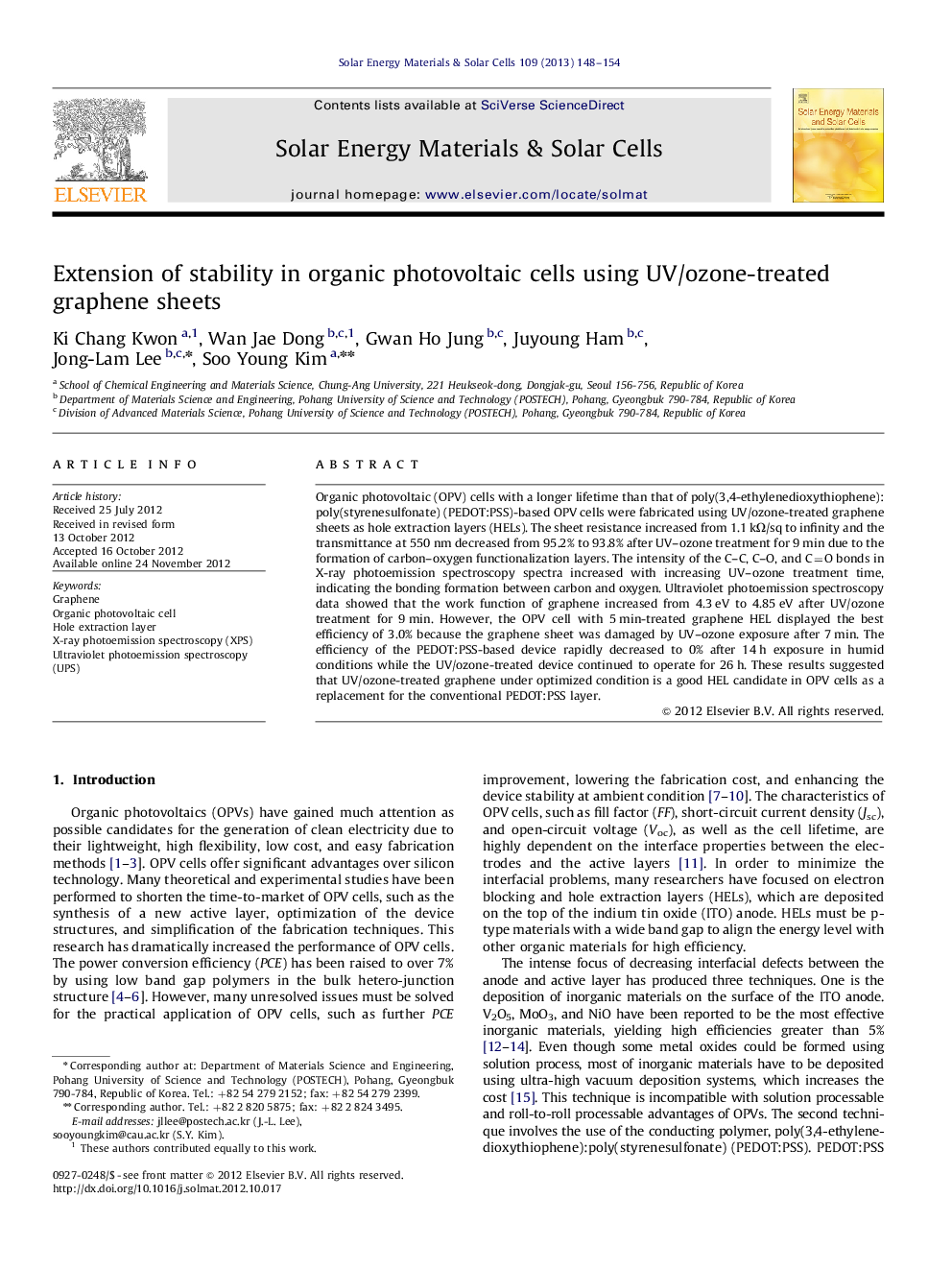| Article ID | Journal | Published Year | Pages | File Type |
|---|---|---|---|---|
| 78426 | Solar Energy Materials and Solar Cells | 2013 | 7 Pages |
Organic photovoltaic (OPV) cells with a longer lifetime than that of poly(3,4-ethylenedioxythiophene): poly(styrenesulfonate) (PEDOT:PSS)-based OPV cells were fabricated using UV/ozone-treated graphene sheets as hole extraction layers (HELs). The sheet resistance increased from 1.1 kΩ/sq to infinity and the transmittance at 550 nm decreased from 95.2% to 93.8% after UV–ozone treatment for 9 min due to the formation of carbon–oxygen functionalization layers. The intensity of the C–C, C–O, and C=O bonds in X-ray photoemission spectroscopy spectra increased with increasing UV–ozone treatment time, indicating the bonding formation between carbon and oxygen. Ultraviolet photoemission spectroscopy data showed that the work function of graphene increased from 4.3 eV to 4.85 eV after UV/ozone treatment for 9 min. However, the OPV cell with 5 min-treated graphene HEL displayed the best efficiency of 3.0% because the graphene sheet was damaged by UV–ozone exposure after 7 min. The efficiency of the PEDOT:PSS-based device rapidly decreased to 0% after 14 h exposure in humid conditions while the UV/ozone-treated device continued to operate for 26 h. These results suggested that UV/ozone-treated graphene under optimized condition is a good HEL candidate in OPV cells as a replacement for the conventional PEDOT:PSS layer.
Graphical abstractFigure optionsDownload full-size imageDownload as PowerPoint slideHighlights► The work function of graphene increased from 4.3 eV to 4.85 eV after UV–ozone treatment for 9 min. ► Stable passivation in organic photovoltaic cell can be achieved with UV/ozone-treated graphene. ► UV/ozone-treated graphene is a candidate of hole extraction layer in organic photovoltaic cells.
